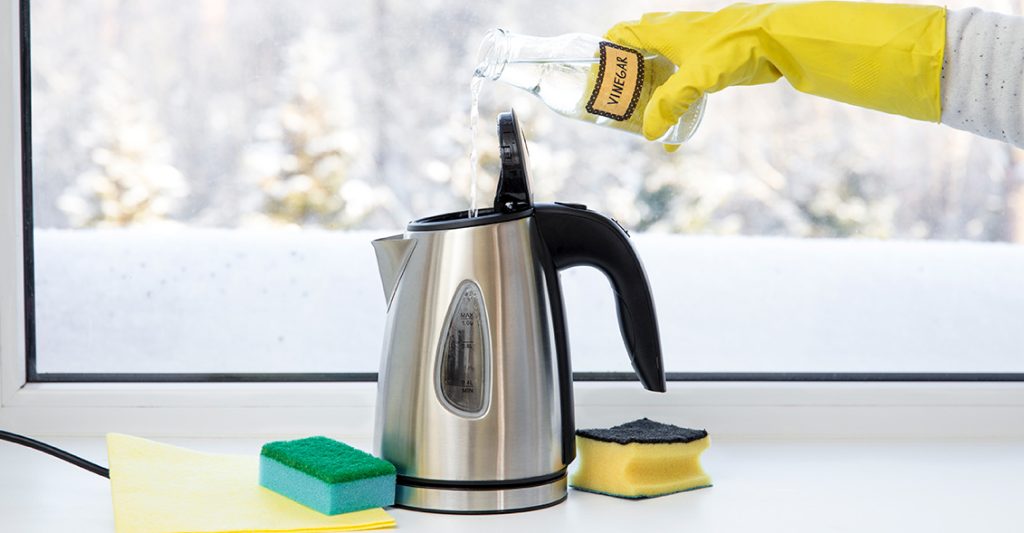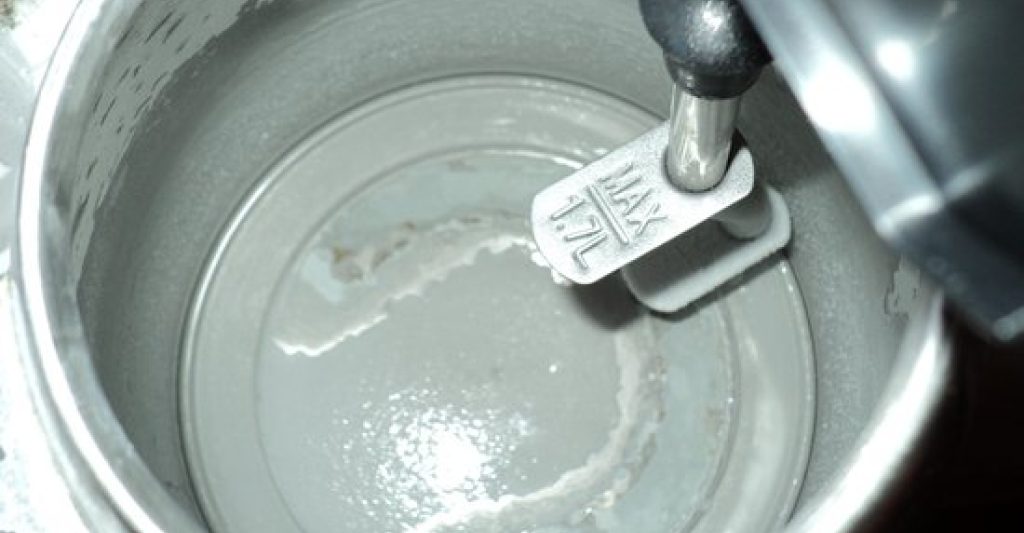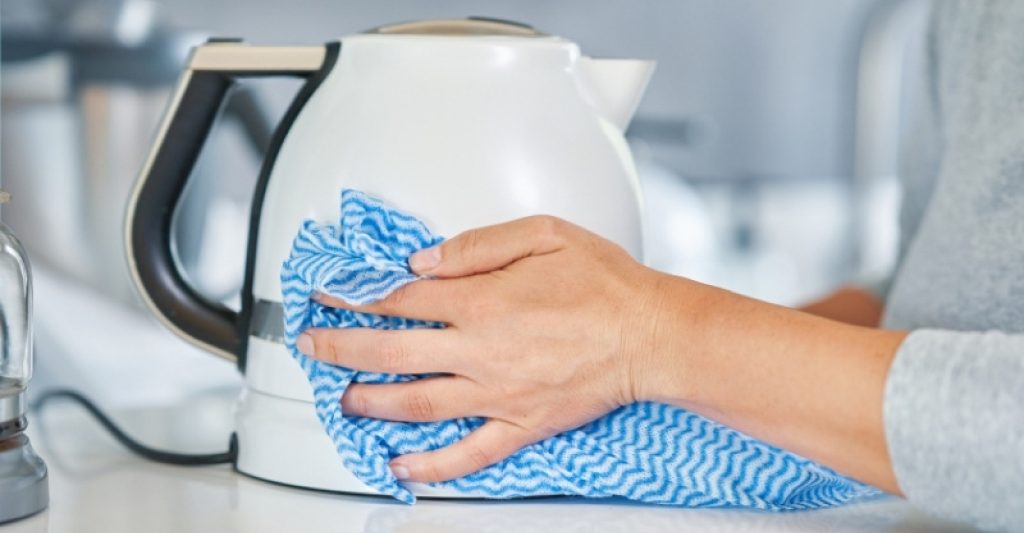Table of Contents
Most individuals are staying at home more often than they did in the past. People’s attitudes on flexible work schedules have evolved along with their work habits. One unanticipated result of all this activity is that more people than usual are now using kettles and other kitchen equipment. This may be the cause of your inability to find out how to properly clean an electric kettle.Dirt2tidy
In the past, most individuals probably rinsed the kettle with water for cleaning. Despite the fact that they may have had one for a while, individuals seldom gave cleaning them a lot of consideration since they hardly ever used them. Yet, because of the sharp growth in consumption, consumers are increasingly more concerned about the cleanliness of their equipment.
The longevity and efficiency of those appliances that are presently used everyday are maintained by routine cleaning and maintenance. If you’ve recently done a lot of work from home, odds are good that you begin each morning by putting on the kettle and brewing a cup of coffee.
The kettle is a fantastic innovation and a useful appliance in your kitchen. It must be one of your kitchen’s most often utilised appliances. And despite the fact that you may believe “it’s only water,” they really do need to be cleaned. Let’s examine the reasons why.

Why does a kettle need to be cleaned?
The most frequent issue with a kettle that is not frequently cleaned is that it might accumulate limescale. Limescale may destroy your kettle if it is not frequently cleaned, and you need to descale the kettle. Also, it results in increased power use and a decline in the flavor of your boiled water. If you’re going to drink tea, make sure it tastes as good as it possibly can.
Depending on the quality of the water in your area, you may need to clean your kettle more often. When boiling hard water, limescale develops. If water is allowed to settle in a kettle, it forms. You must check and clean your kettle more regularly if you reside in a region with more hard water than usual. If you find solid white deposits, you should start working on a thorough clean right away.Dirt2tidy cleaning service

Your most important suggestions for cleaning a kettle
Cleaning your kettle often is the greatest way to extend its life. As a general rule, you ought to clean your kettle’s exterior at least once per week. Second, if you live in an area where limescale is an issue, you should remove it more frequently at least three to four times a year.
Well, let’s get down to business with a step-by-step procedure for cleaning a kettle and removing limescale:
Before cleaning your kettle individually, remove any loose components
Your kettle could include some replaceable components, such as a water filter or cartridge, depending on the type. If so, you need to take them out and clean them independently. Do not own the handbook any longer? In order to avoid making a mistake, I advise looking online.

Soak any parts that can be taken apart in a solution of vinegar and hot water, and then use an old toothbrush to clean them. After doing this, rinse each of these components and set them aside until you have thoroughly cleaned the interior of your kettle.
Cleaning the kettle’s inside
It’s time to clean your kettle’s inside now. Depending on what you have sitting around, you may use a variety of natural household products like vinegar and water to assist clean the interior of your kettle.
White vinegar solution and water mixture Using a solution of water and vinegar in equal parts is one of the most often used solutions. Half-fill the kettle, bring it to a boil, and then let the mixture steep for 20 minutes. After that, you should drain the kettle, fill it with fresh water, and then re-boil it. You won’t have to worry about a vinegar aftertaste if you do it that way.
You may still need to scour the interior of your kettle to get rid of any obstinate limescale if you’ve never cleaned it or haven’t in a while. Using an old toothbrush or a bottle brush with soft bristles is the ideal method for doing this. If you do this after using one of the other ways, it will be easier to get rid of any deposits that are still there.

Kettle exterior cleaning
Even though limescale won’t build up on the outside of your kettle, you should still clean it to improve the look of your kitchen. The outside of your kettle may usually be cleaned with a soft cloth, damp cloth, or microfiber cloth. You may wish to add a little dish soap if there are splatters or other kitchen muck.
Baking soda and water
Fill your kettle with the mixture after adding a teaspoon of bicarbonate to the water. Put this mixture in the pot to boil, then turn it off. Before returning to normal use, make sure your kettle has been completely cleaned and scrub the heating element.
Lemon juice and water are combined in this mixture. Then, a lemon’s slices are sliced and added to the kettle after the lemon juice has been added. The kettle would then be filled from here and brought to a boil. You need to empty your kettle, fill it with plain water, then boil it after letting it rest for around 20 minutes. To make sure the lemon flavour is gone, you may need to fill it with plain water and boil the kettle two or three times.
How regular maintenance helps you keep your kettle clean?
There are a few things you can do to make regular cleaning of your kettle simpler. These will help your kettle last longer and make your tea and coffee taste better and last longer.
Keep water in the kettle from standing idle. This happens often. Typically, you fill it with more water than you need, boil more water than you need to, and then leave the extra water in the kettle to boil again later. You shouldn’t do this since leaving the water alone makes limescale accumulation worse.
Don’t scratch the heating element. When your kettle is made, a protective coating is put on the heating element to keep it safe. Avoid cleaning the heating element with a scrubber since you could harm the coating. This could hurt your kettle.




